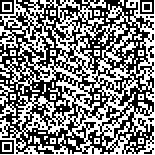黄靓,蔡华安,张娟,等.不同肌内效贴贴扎方式治疗脑卒中后肩手综合征的疗效观察[J].中华物理医学与康复杂志,2022,44(11):994-998
扫码阅读全文

|
| 不同肌内效贴贴扎方式治疗脑卒中后肩手综合征的疗效观察 |
|
| |
| DOI:10.3760/cma.j.issn.0254-1424.2022.11.007 |
| 中文关键词: 脑卒中 肩手综合征 肌内效贴 远红外热成像 |
| 英文关键词: Stroke Shoulder-hand syndrome Kinesio taping |
| 基金项目:湖南省卫生健康委科研计划项目(202203103557) |
|
| 摘要点击次数: 4087 |
| 全文下载次数: 4969 |
| 中文摘要: |
| 目的 观察不同肌内效贴贴扎方式对脑卒中后肩手综合征患者手肿胀程度、肩痛、上肢功能和日常生活活动能力的影响。 方法 采用随机数字表法将60例脑卒中后肩手综合征患者分为对照组、A组、B组、C组,每组15例。4组患者均予以康复训练和常规药物治疗,A组在对照组基础上进行手部爪形+腕部I形+肩部I形贴扎,B组在对照组基础上进行手部爪形+腕部I形+肩部Y形贴扎,C组在对照组基础上进行手部爪形+腕部I形+肩部Y形+肩部I形贴扎。治疗前和治疗4周后(治疗后),采用排水法计算患者双手体积差,用远红外热成像仪测量患者双手温度差,用视觉模拟评分法(VAS)、Fugl-Meyer量表(FMA)、改良Barthel指数(MBI)评定患者的肩痛、上肢运动功能、日常生活活动能力。 结果 治疗前,4组患者双手体积差、双手温度差、VAS、FMA、MBI评分比较,差异无统计学意义(P>0.05)。与组内治疗前比较,4组患者治疗后双手体积差、双手温度差、VAS、FMA、MBI评分均有所改善(P<0.05)。与对照组治疗后比较,A组、B组、C组双手体积差、双手温度差、VAS评分减少、FMA评分增加(P<0.05)。C组治疗后FMA评分[(27.69±6.91)分]高于对照组[(12.87±3.04)分]、A组[(20.57±6.16)分]、B组[(18.64±5.73)分](P<0.05)。4组治疗后MBI评分比较,差异无统计学意义(P>0.05)。 结论 康复训练和肌内效贴均可有效减小脑卒中后肩手综合征患者的双手体积差和双手温度差,减轻患肩痛,提高日常生活活动能力。在康复训练基础上,进行手部爪形+腕部I形+肩部Y形+肩部I形贴扎还可提高患者患侧的上肢运动功能。 |
| 英文摘要: |
| Objective To observe the effects of different kinesio taping methods on hand swelling, shoulder pain, upper limb motor function and ability in the activities of daily living of stroke survivors with shoulder-hand syndrome. Methods Sixty stroke survivors with shoulder-hand syndrome were randomly divided into groups A, B, C and a control group, each of 15. In addition to routine rehabilitation training and drug treatment, as well as claw-shaped and I-shaped taping of the hand and wrist, group A received I-shaped kinesio taping, B received Y-shape and C received I-shape plus Y-shaped taping of the shoulder. Before and after 4 weeks, the drainage method was employed to calculate the difference in volume between the two hands. Their temperatures were also measured. The subjects reported shoulder pain using a visual analog scale (VAS). Upper limb motor functioning was quantified using Fugl-Meyer scores, and difficulties in the activities of daily living were evaluated using the modified Barthel index (MBI). Results Before the treatment there were no significant differences among the four groups in terms of any of the measurements. Afterward the treatment, significant improvement was observed in the volume and temperature differences between hands, as well as in the VAS, FMA and MBI scores. After the treatment, group C′s average FMA score was significantly higher than those of the other groups. There was no significant difference in MBI scores among the four groups. Conclusions Supplementing rehabilitation training with I-shaped plus Y-shaped kinesio taping can effectively reduce the volume and temperature differences between the hands, relieve shoulder pain, and improve effectiveness in the activities of daily living of persons with shoulder-hand syndrome after a stroke. Hand-claw and wrist-I taping also have some effect. |
|
查看全文
查看/发表评论 下载PDF阅读器 |
| 关闭 |
|
|
|